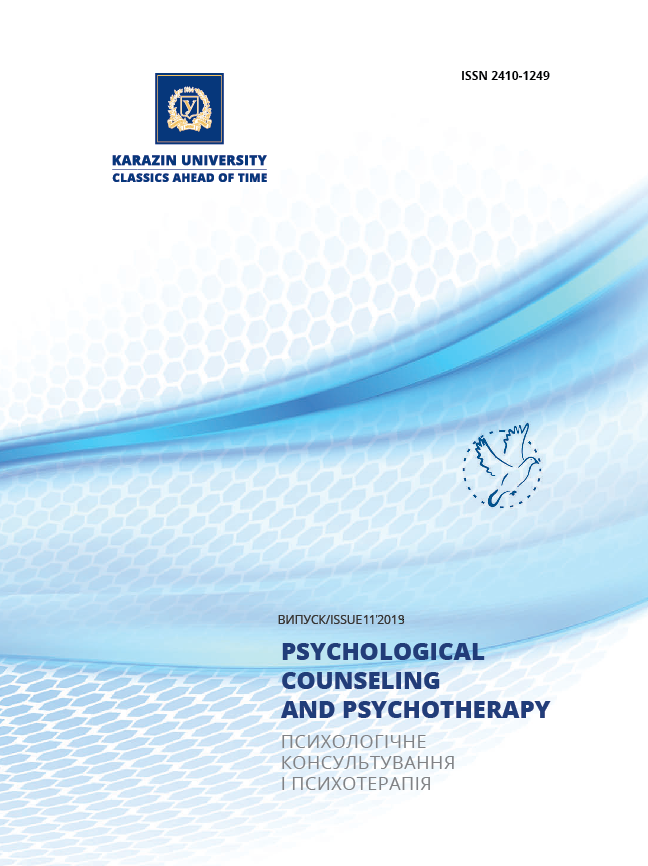On The Influence of Genetic Factors on the Formation of Homosexuality by Data of Twin Studies
Abstract
Results of twin studies are presented; these demonstrate that in a number of cases genetic effects can play a role of mild predisposing factors for the development of homosexuality, but the main part in its formation is accounted for by psychological and social factors. The opinion that genetic factors play the only and dominant role in the genesis of homosexuality does not hold water due to the fact that if it were so then their concordance for homosexuality in monozygotic twins would be 100 %, but it is not observed in reality. The studies conducted with the correct selection of examinees revealed 20 % of the concordance for homosexuality in male monozygotic twins and 24 % in female ones (Bailey, J.M., et al. Genetic and environmental influences on sexual orientation and its correlates in an Australian twin sample. J. Pers. Soc. Psychol. 78(3), 524‑536). The use of Holzinger’s formula for analyzing the obtained numerical findings demonstrated that in the above case the proportion between heritable and environmental factors for male persons was 0.2 (20 %) versus 0.8 (80 %), for female persons it being 0.15 (15 %) versus 0.85 (85 %). Earlier twin studies (Bailey, J.M., Pillard, R.C. (1991). A genetic study of male sexual orientation. Arch. Gen. Psychiatry. 48(12), 1089–1096) revealed that their concordance for homosexuality in siblings (biological brothers, who are not twins) was lower than in adopted brothers (9.2 % versus 11 %), it contradicting to the idea of genetic determination of same-sex attraction. Moreover, attention is also attracted by the fact that dizygotic male twins demonstrated a significantly higher concordance for homosexuality than siblings (22 % versus 9.2 %). But it is known that dizygotic twins, like siblings, have on an average only 50 % of common genes. If there were genetic determination, such differences would not exist; the revealed difference demonstrates environmental effects, since it is evident that family upbringing of dizygotic twins is much more similar. Also it is necessary to pay attention to the fact that the rate of homosexuality in adopted homosexual brothers (11 %) considerably exceeded recent estimations of the part of homosexuals in the general population and was actually equal to the value for siblings, once again convincingly demonstrating a significant role of the environment in the formation of sexual orientation. We should not also ignore the fact that upbringing of monozygotic twins is even more similar than that of dizygotic ones; this phenomenon can cause their larger concordance for homosexuality.
Downloads
References
Bailey, J.M., Dunne, M.P., Martin, N.G. (2000). Genetic and environmental influences on sexual orientation and its correlates in an Australian twin sample. J. Pers. Soc. Psychol. 78(3), 524 536.
Bailey, J.M., Pillard, R.C. (1991). A genetic study of male sexual orientation. Arch. Gen. Psychiatry. 48(12), 1089–1096.
Bailey, J.M., Pillard, R.C., Neale, M.C., Agyei, Y. (1993). Heritable factors influence sexual orientation in women. Archives of General Psychiatry. 50(3), 217–223.
Baron, M. (1993). Genetics and Human Sexual Orientation. Biological Psychiatry. 33(11-12), 759–761.
Bearman, P.S., Brückner, H. (2002). Opposite-Sex Twins and Adolescent Same-Sex Attraction. American Journal of Sociology. 107(5), 1179–1205.
Dawood, K., Bailey, J.M., Martin, N.G. (2009). Chapter 19. Genetic and Environmental Influences on Sexual Orientation. In Y.-K. Kim (Ed.) Handbook of Behavior Genetics. Springer Science+Business Media, LLC, DOI 10.1007/978-0-387-76727-7 _ 19.
Hubbard, Ruth, Wald, Elijah. (1997). Exploding the gene myth: How Genetic Information is Produced and Manipulated by Scientists, Physicians, Employers, Insurance Companies, Educators, and Law Enforcers. – Boston: Beacon Press.
King, M., McDonald, E. (1992). Homosexuals who are twins: A study of 46 probands. British Journal of Psychiatry.160, 407–409.
Kruks, R., Baur, K. (2005). Сексуальность. SanktPetersburg: praym–EVROZNAK. (in Russian)
Långström, N., Rahman, Q., Carlström, E., Lichtenstein, P. (2010). Genetic and Environmental Effects on Same-sex Sexual Behavior: A Population Study of Twins in Sweden. Arch Sex Behav. 39(1), 75–80.
Mayer, L.S., McHugh, P.R. (2016). Part One: Sexual Orientation. Special Report Sexuality and Gender. Findings from the Biological, Psychological, and Social Sciences. The New Atlantis. A Journal of Technology & Society. – URL: https://www.thenewatlantis.com/publications/part-one-sexual-orientation-sexuality-and-gender (data of the reference: 01.07.2018).
URL: www.medbio-kgmu.ru/Other/720.doc Близнецовый метод антропогенетики. [The twin method of anthropogenetics]. – (the date of the reference: 09.10.2018). (in Russian)
URL: http://overcoming-x.ru/issledovanie-geneticheskoj-predraspolozhennosti-k-gomoseksualnosti.html Исследование генетической предрасположенности к гомосексуальности. [Study of genetic predisposition to homosexuality] – (the date of the reference: 10.12.2018). (in Russian)








